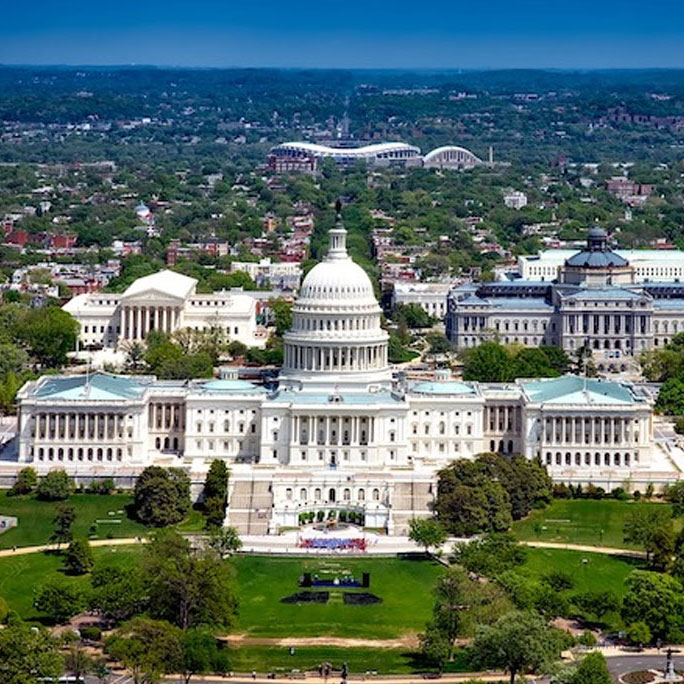Nonprofit Mailers: Keep Calm and Send Mail
Reports of USPS Shutting Down by June are Premature
Yesterday, TNPA members flagged a couple media articles that faulted the CARES Act for not appropriating funding to the USPS (instead opting to increase USPS borrowing power by $10 billion). In today’s guest blog post, Steve Kearney, Executive Director of Alliance of Nonprofit Mailers, walks through some reassurances that the postal system is not on the brink of collapse. Read on …
While this comes with no guarantees, we are very confident that United States Postal Service mail will continue to be very reliable and affordable. We also strongly believe that the U.S. Government will ensure that its vital national infrastructure Postal Service will continue to operate for the foreseeable future. We recommend that nonprofit mailers stay the course with their mailing programs.
Mail Volume and Postal Revenue are Down
Although we do not have official data or forecasts from USPS, it is obvious that its volume and revenue are down quite a bit. This is because so much mail volume has in recent years consisted of retail advertising. And we all know that the retail sector has been largely curtailed.
Staying in the Mail can have Greater Impact
With mail volume down, those mailers who do stay in the mail have the opportunity to stand out more in the mailbox. And participating in the USPS Informed Delivery program adds to the mailer’s impact with a daily digital image and call to action married with your physical mail piece. The Postal Service has used Informed Delivery to communicate with subscribing households about the Covid-19 crisis.
Package Volume is Up
On the other hand, the Postal Service is sharing in a boom of package shipments as Americans order more online for delivery. The Postal Service has said for a long time, and we agree, that growth in package volume is very unlikely to be enough to offset the decline in mail volume that already was occurring before the Covid-19 crisis. That’s because the package business is competitive and many private sector companies can deliver at a lower cost than USPS, especially as volume and density have grown.
USPS Service is Holding in There
The Postal Service has a long history of responding very well to crises, and it is stepping up very well in this one. We all are very fortunate to have the experienced Postmaster General Megan Brennan leading USPS through these difficult times.
We are receiving regular updates and briefings, and mailers can check with their local USPS representatives, sign up for Industry Alerts by emailing IndustryAlert@usps.com, and click on the Postal Service home page: www.usps.com. The service disruptions that have occurred have been very local and can be found at the USPS Business Mailers Service Disruption page.
Reports of USPS Shutting Down by June are Premature
The news reports by publishers such as Fortune, USPS warns it might have to shutter by June as $2 trillion coronavirus stimulus package provides no funding, are rattling many nonprofit mailers’ nerves. We recommend that mailers take these reports in their context. The Postal Service has not produced an official public forecast of its volume or finances.
The June prognostication came from members of the House Committee on Oversight and Reform. The members of Congress had received briefings by USPS management and unions, and were advocating that major relief for the Postal Service be included in the $2.2 trillion coronavirus stimulus package signed by President Trump on Friday, March 27.
We do not know the data or assumptions behind the House-shared forecast. We do know that the existing USPS forecasting models cannot possibly predict what is going to happen. They can translate a relationship between indicators like the Gross Domestic Product (GDP) and mail volume, and then turn that into a cash forecast. But connections between GDP and mail could be quite different in a major dislocation. It’s similar to the scientific community needing to develop new models for the impact of coronavirus.
It is possible, but not at all certain, that USPS cash could run out by June, assuming no support from the Congress. But no one knows at this point.
What Happened with the Stimulus Bill?
The House Oversight Committee proposed $25 billion in cash appropriations and forgiveness of the existing USPS debt to Treasury of $11 billion. The Senate Committee on Homeland Security & Governmental Affairs said they would support $13 billion in cash appropriations which the House agreed to support.
When the leaders of the Senate committee, Ron Johnson (R-WI) and Gary Peters (D-MI), brought the proposal to the Administration, Treasury Secretary Steven Mnuchin responded that they would support only a $10 increase in USPS borrowing authority, “upon terms and conditions mutually agreed upon by the Secretary and the Postal Service.” The Postal Service already had $4 billion of borrowing authority unused under its statutory borrowing cap.
There is much speculation about why the Administration denied direct cash aid to USPS in this stimulus package. One idea is that they might want to wait until a new Postmaster General is installed by the USPS Governors, all of whom were appointed by President Trump. In any case, we are all very fortunate to have PMG Megan Brennan at the helm to lead the Postal Service through this crisis.
There will be additional rounds of stimulus, and USPS is very likely to be in one. USPS official announcement of a likely scenario for its finances could be the factor that pushes postal appropriations over the goal line.
USPS is too Essential to Fail
‘Too big to fail” has been a buzzword in previous financial crises involving commercial banks. And the term “essential” has become very important during the current pandemic. The United States Postal Service is too essential to fail.
We in the nonprofit sector already understood this very well. Much of America probably took USPS for granted. But now everyone is beginning to get it. Whether delivery of prescription drugs, packages of important household necessities, voting by mail, correspondence with loved ones we cannot be with in person, coronavirus stimulus checks delivered to those without direct deposit, magazines with useful information, advice, and words of support, or bills and statements for those without broadband, we need our USPS.
WIRED Magazine recently reported on the Postal Service’s potential major role in helping our nation survive a crisis of the current magnitude. We could rely on our postal carriers to deliver coronavirus test kits or vaccines. Who else visits every address six days a week? Post offices also could play a role in providing ubiquitous access.
Our political leaders understand that USPS is too essential to fail. As dysfunctional as our political system has been, it will figure out a way to keep our Postal Service going, most likely with large cash appropriations. The House and Senate agreeing on a $13 billion stimulus is a sign of progress.
They have some time to do this. USPS had $9.137 billion cash in the Postal Service Fund on February 29. They have $4 billion borrowing authority under existing law, and now another $10 billion from the stimulus bill to use in the crisis. That adds up to $23.137 billion in liquidity before the impact of the crisis. How quickly the Postal Service will burn through that liquidity is a big question.
This Should Spell the End of 100% Mailer-Funded USPS
We and others for some time pre-crisis have been questioning the viability of the 100 percent mailer-funded USPS. This “business model” was passed by Congress in 1970, and fully phased in by the early 1980s. It worked alright in the 1980s and 1990s when mail volume grew at an unprecedented and never to be approached rate—it doubled in 19 years from 100 to 200 billion pieces.
The 100 percent mailer funded model has definitely not worked since volume peaked at 213 billion in 2006. The Postal Service, the Postal Regulatory Commission, and Congress have tried mightily to make it work for 14 years. The coronavirus crisis should put an end to that effort. (Although, keeping all options open, the USPS yesterday filed opposition to our joint motion at the PRC to put a hold on the ten-year regulatory review.)
The reason that 100 percent mailer funding cannot work is that a very large and growing portion of what USPS does is public services for our nation, also known as its universal service obligation. Mailers cannot possibly afford to foot the bill for all the public services plus the actual cost of delivering their mail. And now the public services are likely to increase, much to the relief of a grateful nation.
USPS Governors to Approve Borrowing Tomorrow
On Wednesday, April 1, at high noon, the USPS Board of Governors will meet for the purpose of approving a borrowing resolution. The public is invited to listen by audio webcast. It will be interesting to hear how much of the borrowing authority the Governors will authorize USPS management to use. A good bet is $10 billion. Even more intriguing is whether USPS will issue any official guidance on its going-forward mail volume, revenue and liquidity.
Stay tuned. Send mail.
Steve Kearney is Executive Director of Alliance of Nonprofit Mailers, www.nonprofitmailers.org


